C++中string容器的修改操作
目录
1.push_back() 尾插字符
2.append() 尾插字符串
3.operator+=
4.assign 覆盖
5.insert() 指定位置插入
6.erase() 删除
7.replace() 替换
8.swap() 交换
9.pop_back() 尾删
1.push_back() 尾插字符
void push_back (char c)
string s("i miss gjj");
s.push_back('!');
cout << s << endl;//i miss gjj!2.append() 尾插字符串
1.string& append (const string& str) 尾插字符串
string s("i miss gjj");
s.append(",i love gjj");
cout << s << endl;//i miss gjj,i love gjj2.string& appned (const string& str, size_t subpos, size_t sublen) 尾插字符串的第subpos位置开始的sublen字符(sublenda≥剩余字符串长度,则尾插剩余所有字符)
string s("i miss gjj");
s.append("040525", 2, 4);//i miss gjj05253.string& append (char* s) 尾插指针指向的字符串
string s("i miss gjj");
char p[] = "!!!";
s.append(p);
cout << s << endl;//i miss gjj!!!4.string& append (char* s, size_t n) 尾插指针指向字符串的前n个字符
string s("i miss gjj");
char p[] = "5257";
s.append(p, 2);
cout << s << endl;//i miss gjj525.string& append (char c, size_t n) 尾插n个字符c
string s("i miss gjj");
s.append(10, '!');
cout << s << endl;//i miss gjj!!!!!!!!!!6.template <class InputIterator>
string& append (InputIterator first, InputIterator last) 尾插迭代器指向范围的字符串
string s1("i miss gjj");
string s2("i miss gjj");
string s(" 5257 ");
s1.append(s.begin(), s.end());
s2.append(++s.begin(), s.end() - 2);
cout << s1 << endl;//i miss gjj 5257
cout << s2 << endl;//i miss gjj5253.operator+=
1.string& operator+= (const string& str)
2.string& operator+= (const char* s)
3.string& operator+= (char c)
string s1(" i miss gjj !");
string s2(" gjj miss i !");
s1 += s2;
cout << s1 << endl;// i miss gjj ! gjj miss i !
s1 += "######";
cout << s1 << endl;// i miss gjj ! gjj miss i !######
s1 += '$';
cout << s1 << endl;// i miss gjj ! gjj miss i !######$4.assign 覆盖
1.string& assign (const string& str) 用对象str数据覆盖现有对象数据
string s1("hello world");
string s2("gjj");
s1.assign(s2);
cout << s1 << endl;//gjj2.string& assign (const string& str, size_t subpos, size_t sublen) 用对象str的第subpos位置开始的sublen个数据覆盖现有对象数据
string s1("hello world");
string s2("gjj");
s1.assign(s2, 1, 2);
cout << s1 << endl;//jj3.string& assign (const char* s) 用字符串s覆盖现有对象数据
string s("!!!");
char p[] = "gjj and i";
s.assign(p);
cout << s << endl;//gjj and i4.string& assign (const char* s, size_t n) 用字符串s的前n个字符覆盖现有对象数据
string s("!!!");
char p[] = "gjj and i 5257";
s.assign(p, 9);
cout << s << endl;//gjj and i5.string& assign (size_t n, char c) 用n个字符c覆盖现有对象数据
string s("!!!");
s.assign(2, 'j');
cout << s << endl;//jj6.template <class InputIterator>
string& assign (InputIterator first, InputIterator last) 用迭代器指定范围覆盖现有对象数据
string s1("!!!");
string s2("gjj");
s1.assign(s2.begin(), s2.end());
cout << s1 << endl;//gjj5.insert() 指定位置插入
1.string& insert (size_t pos, const string& str) 在pos位置前插入对象str数据
string s1("gjj");
string s2("love ");
s1.insert(0, s2);
cout << s1 << endl;//love gjj2.string& insert (size_t pos, const string& str, size_t subpos, size_t sublen) 在pos位置前插入对象str从subpos位置开始的sublen个数据
string s1("hello");
string s2(" world");
s1.insert(5, s2, 0, 6);
cout << s1 << endl;//hello world3.string& insert (size_t pos, const char* s) 在pos位置前插入字符串s
string s1("hello");
char p[] = " world";
s1.insert(5, p);
cout << s1 << endl;//hello world4.string& insert (size_t pos, const char* s, size_t n) 在pos位置前插入字符串s的前n个字符
string s1("hello ");
char p[] = "12345";
s1.insert(6, p, 3);
cout << s1 << endl;//hello 1235.string& insert (size_t, pos, size_t n, char c) 在pos位置前插入n个字符c
void insert (iterator p, size_t n, char c) 在迭代器p指向位置前插入n个字符c
string s1("hello ");
string s2("hello ");
s1.insert(s1.begin(), 3, '#');
s2.insert(s2.end(), 3, '#');
cout << s1 << endl;//###hello
cout << s2 << endl;//hello ###6.iterator insert (iterator p, char c) 在迭代器p指向位置插入字符c
string s("hello");
s.insert(s.end(), '!');
cout << s << endl;//hello!7.template <class InputIterator>
void insert (iterator p, InputItrator first, InputItrator last) 在迭代器p指向的位置插入迭代器first和last指向的范围数据
string s1("hello");
string s2(" world");
s1.insert(s1.end(), s2.begin(), s2.end());
cout << s1 << endl;//hello world6.erase() 删除
1.string& erase (size_t pos = 0, size_t len = npos) 从pos位置开始删除len个字符(如果不提供参数相当于clear,删除所有数据)
2.iterator erase (iterator p) 删除迭代器p指示的位置
3.iterator erase (iterator first, iterator last) 删除迭代器first与last指示范围之间的数据
string s("hello");
s.erase(2, 10);
cout << s << endl;//hestring s("hello");
s.erase(s.begin());
cout << s << endl;//ellostring s("hello");
s.erase(s.begin(), --s.end());
cout << s << endl;//o7.replace() 替换
1.string& replace (size_t pos, size_t len, const string& str) 用str数据替换pos位置起的len个字符
string& replace (iterator i1, iterator i2, const string& str) 用str数据替换迭代器i1和i2指示范围数据
string s1("hello world");
string s2("#####");
s1.replace(2, 3, s2);
cout << s1 << endl;//he##### world
s1.replace(2, 3, "$$$$$");
cout << s1 << endl;//he$$$$$## world
s1.replace(s1.begin(), s1.end(), s2);
cout << s1 << endl;//#####2.string& replace (size_t pos, size_t len, const string& str, size_t subpos, size_t sublen)
用str的subpos位置开始的sublen个数据替换pos位置开始的len个数据
string s("hello world");
s.replace(6, 5, "bit", 0, 3);
cout << s << endl;//hello bit3.string& replace (size_t pos, size_t len, const char* s) 用字符串s替代pos位置开始的len个数据
string& replace (iterator i1, iterator i2, const char* s) 用字符串s替代迭代器i1和i2指向的范围数据
string s("hello world");
char p1[] = "gjj";
char p2[] = "world";
s.replace(6, 5, p1);
cout << s << endl;//hello gjj
s.replace(s.begin() + 6, s.end(), p2);
cout << s << endl;//hello world4.string& replace (size_t pos, size_t len, const char*s, size_t n) 用字符串s的前n个字符替代pos位置开始的len个数据
string& replace (iterator i1, iterator i2, const char*s, size_t n) 用字符串s的前n个数据替代迭代器i1和i2指向的范围数据
string s("hello world");
char p1[] = "gjj111";
char p2[] = "world222";
s.replace(6, 5, p1, 3);
cout << s << endl;//hello gjj
s.replace(s.begin() + 6, s.end(), p2, 5);
cout << s << endl;//hello world5.string& replace (size_t pos, size_t len, size_t n, char c) 用n个字符c替换pos位置开始的len个数据
string& replace (iterator i1, iterator i2, size_t n, char c) 用n个字符c替换迭代器i1和i2指示的范围数据
string s("hello world");
s.replace(6, 5, 2, 'j');
cout << s << endl;//hello jj
s.replace(s.begin() + 6, s.end(), 2, 'z');
cout << s << endl;//hello zz6.template <class InputIterator>
string& replace (iterator i1, iterator i2, InputIterator first, InputIterator last)
用迭代器first和last指示的数据范围替换迭代器i1和i2指示的数据范围
string s1("hello world");
string s2("gjj");
s1.replace(s1.begin() + 6, s1.end(), s2.begin(), s2.end());
cout << s1 << endl;//hello gjj8.swap() 交换
void swap(string& str) 交换两个对象的数据
string s1("hello world");
string s2("hello gjj");
s1.swap(s2);
cout << s1 << endl;//hello gjj
cout << s2 << endl;//hello world9.pop_back() 尾删
void pop_back() 删除最后一个字符
string s("hello gjj#");
s.pop_back();
cout << s << endl;//hello gjj相关文章:

C++中string容器的修改操作
目录 1.push_back() 尾插字符 2.append() 尾插字符串 3.operator 4.assign 覆盖 5.insert() 指定位置插入 6.erase() 删除 7.replace() 替换 8.swap() 交换 9.pop_back() 尾删 1.push_back() 尾插字符 void push_back (char c) string s("i miss gjj"); s…...

Elasticsearch:虚拟形象辅助和对话驱动的语音到 RAG 搜索
作者:来自 Elastic Sunile Manjee 搜索的演变 搜索已经从产生简单结果的简单文本查询发展成为容纳文本、图像、视频和问题等各种格式的复杂系统。 如今的搜索结果通过生成式人工智能、机器学习和交互式聊天功能得到增强,提供更丰富、更动态且与上下文相…...

测试开发工程师(QA)职业到底需要干些什么?part7:硬件测试工程师QA
概述 硬件测试工程师QA主要负责确保硬件产品在设计、制造和交付过程中的质量和性能。主要任务是进行测试、验证和分析硬件系统、组件和设备,以确保其符合规格和质量标准。下面是硬件测试工程师QA在其工作中常涉及的一些方面: 测试计划和策略:…...
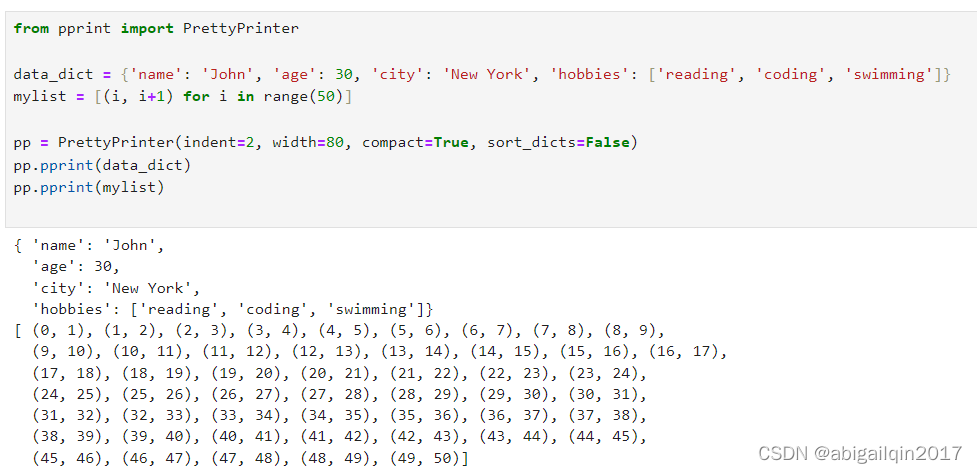
Python基础:标准库 -- pprint (数据美化输出)
1. pprint 库 官方文档 pprint --- 数据美化输出 — Python 3.12.2 文档 pprint — Data pretty printer — Python 3.12.2 documentation 2. 背景 处理JSON文件或复杂的嵌套数据时,使用普通的 print() 函数可能不足以有效地探索数据或调试应用程序。下面通过一…...

Visual Studio 小更新:改善变量的可见性
在 Visual Studio 2022 17.10 预览版 2 中,我们改善了一些小功能,例如:在调试版本中,变量窗口现已可以显示调用堆栈中任意帧的局部变量。 如需体验此功能,请直接安装最新预览版本,就可以知道是怎么一回事儿…...
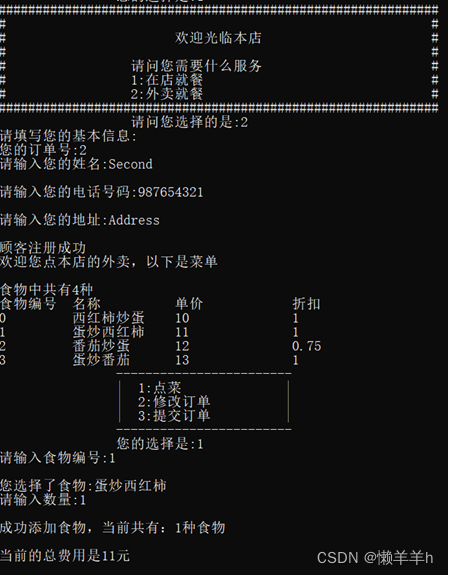
C++自主点餐系统
一、 题目 设计一个自助点餐系统,方便顾客自己点餐,并提供对餐厅销售情况的统计和管理功能。 二、 业务流程图 三、 系统功能结构图 四、 类的设计 五、 程序代码与说明 头文件1. SystemMap.h #pragma once #ifndef SYSTEMMAP #define SYSTEMMAP #in…...

jconsole jvisualvm
jconsole 打开方式 命令行输入 jconsole双击想要连接的应用 界面展示 jvisualvm 打开方式 命令行输入 jvisualvm双击想要连接的应用 可以安装插件,比如 Visual GC 直观看到 GC 过程...

python vtkUnstructuredGrid 转 vtkAlgorithmOutput_
在VTK (Vtk.py)中,vtkUnstructuredGrid对象可以通过多种方式转换为vtkAlgorithmOutput_对象。这种转换通常在管道中使用,以将一个算法的输出传递给另一个算法作为其输入。 以下是一个简单的例子,展示如何将vtkUnstructuredGrid对象转换为 v…...
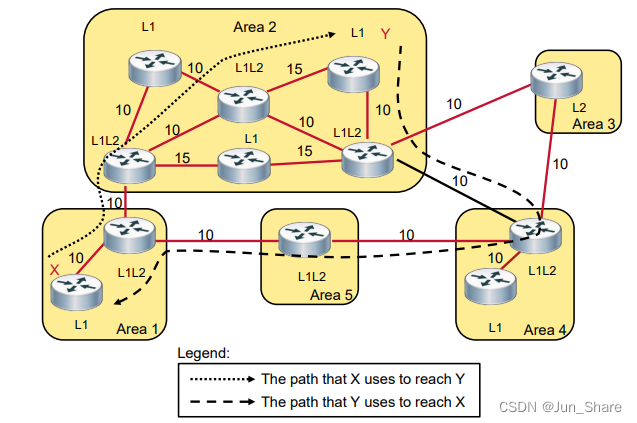
IS-IS路由
概览: Intermediate System-to-Intermediate System,中间系统到中间系统协议 IS-IS--IGP--链路状态协议--AD值:115 IS--中间系统(路由器) ES--终端系统(PC) 在早期IS-IS的开发并不是为了IP…...

打造新质生产力,亚信科技2024年如何行稳致远?
引言:不冒进、不激进,稳扎稳打, 一个行业一个行业地深度拓展。 【全球云观察 | 科技热点关注】 基于以往“一巩固、三发展”的多年业务战略,亚信科技正在落实向非通信行业、标准产品、软硬一体产品和国际市场的“四…...

开源博客项目Blog .NET Core源码学习(12:App.Application项目结构分析)
开源博客项目Blog的App.Application项目主要定义网站页面使用的数据类,同时定义各类数据的增删改查操作接口和实现类。App.Application项目未安装Nuget包,主要引用App.Core项目的类型。 App.Application项目的顶层文件夹如下图所示,下面逐…...
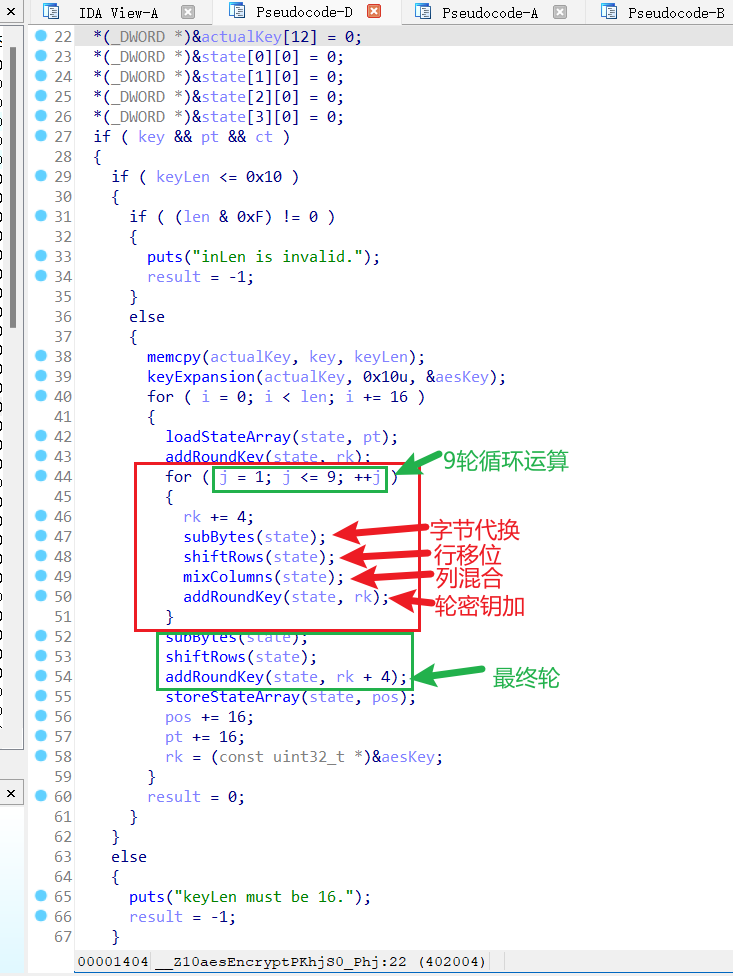
AES加密解密算法
一,AES算法概述 AES属于分组加密,算法明文长度固定为128位(单位是比特bit,1bit就是1位,128位等于16字节) 而密钥长度可以是128、192、256位 当密钥为128位时,需要循环10轮完成加密࿰…...
)
计算机网络(05)
计算机网络(04) 网络负载均衡 由多台服务器以对称的方式组成一个服务器集合每台服务器都具有等价的地位 , 可以单独对外提供服务而无须其他服务器的辅助均衡负载能够平均分配客户请求到服务器列阵,借此提供快速获取重要数据,解决…...
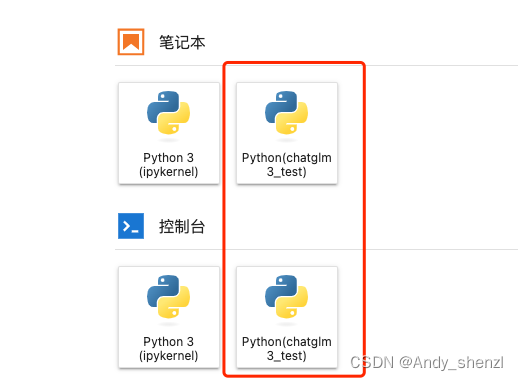
6、ChatGLM3-6B 部署实践
一、ChatGLM3-6B介绍与快速入门 ChatGLM3 是智谱AI和清华大学 KEG 实验室在2023年10月27日联合发布的新一代对话预训练模型。ChatGLM3-6B 是 ChatGLM3 系列中的开源模型,免费下载,免费的商业化使用。 该模型在保留了前两代模型对话流畅、部署门槛低等众多…...
)
python面试题(1~10)
1、列表(list)和元组(tuple)有什么区别? ①列表是不可变的,创建后可以对其进行修改。元组是不可变的,元组一旦创建,就不能对其进行修改。 ②列表表示的顺序,它们是有序…...
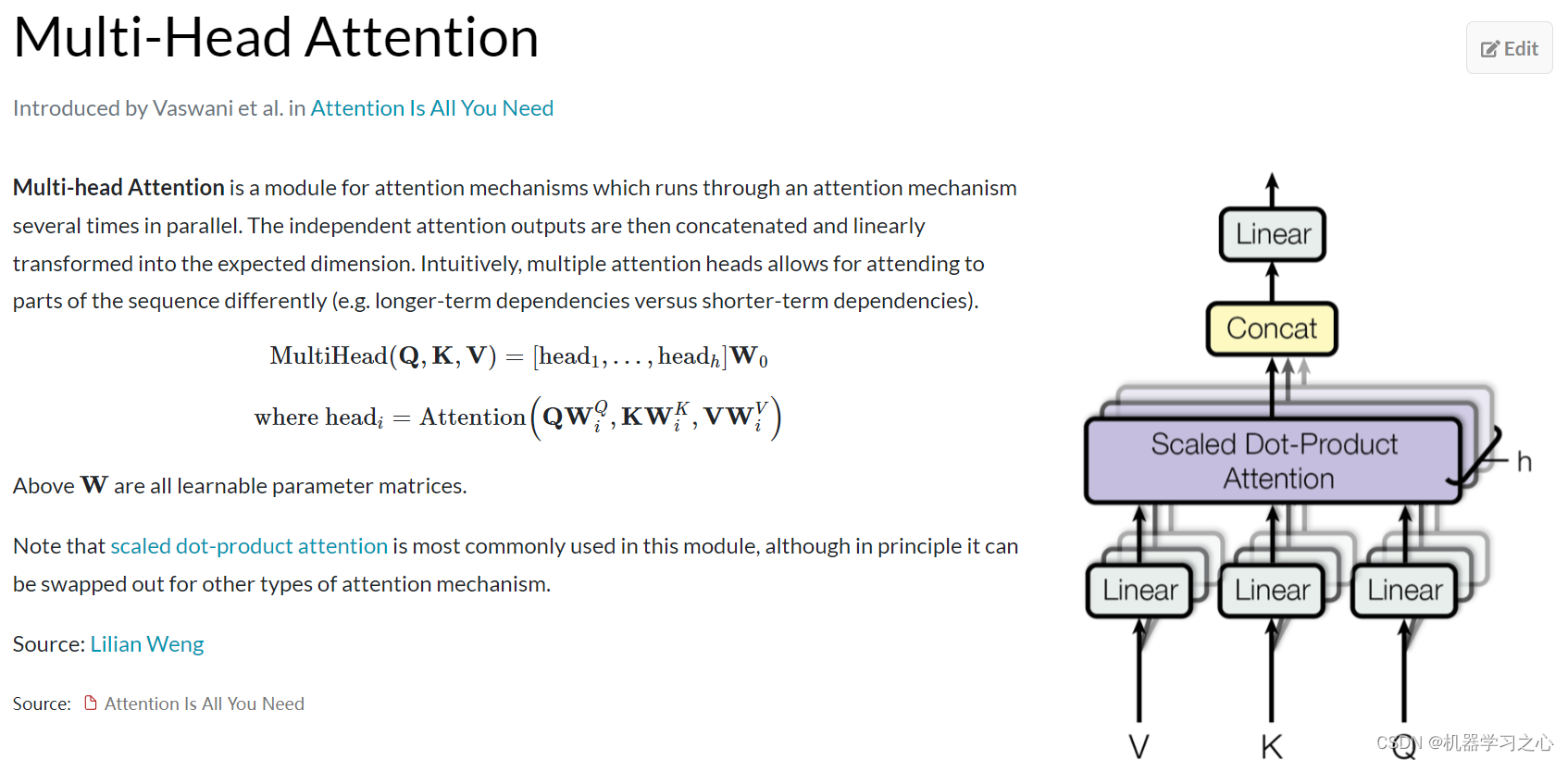
分类预测 | Matlab实现CNN-LSTM-Mutilhead-Attention卷积神经网络-长短期记忆网络融合多头注意力机制多特征分类预测
分类预测 | Matlab实现CNN-LSTM-Mutilhead-Attention卷积神经网络-长短期记忆网络融合多头注意力机制多特征分类预测 目录 分类预测 | Matlab实现CNN-LSTM-Mutilhead-Attention卷积神经网络-长短期记忆网络融合多头注意力机制多特征分类预测分类效果基本介绍模型描述程序设计参…...
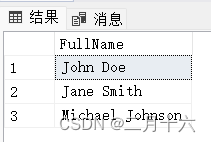
SQLServer CONCAT 函数的用法
CONCAT函数用于将多个字符串值连接在一起。以下是一个简单的示例,演示了如何使用CONCAT函数: -- 创建一个示例表 CREATE TABLE ExampleTable (FirstName NVARCHAR(50),LastName NVARCHAR(50) );-- 插入一些示例数据 INSERT INTO ExampleTable (FirstNam…...

python快速入门一
变量 定义一个变量并打印到控制台 message "Hello World!" print(message)控制台输出 Hello World!修改变量 message "Hello World!" print(message) message "Hello Python World!" print(message)控制台输出 Hello World! Hello Pytho…...

Elasticsearch 面试题及参考答案:深入解析与实战应用
在大数据时代,Elasticsearch 以其强大的搜索能力和高效的数据处理性能,成为了数据架构师和开发者必备的技能之一。本文将为您提供一系列精选的 Elasticsearch 面试题及参考答案,帮助您在面试中脱颖而出,同时也为您的大数据架构设计提供实战参考。 1. 为什么要使用 Elastic…...

【ARM 嵌入式 C 入门及渐进 18 -- 字符数字转整形函数 atoi 介绍】
请阅读【嵌入式开发学习必备专栏 】 文章目录 字符数字转整形函数 atoiatoi 简单实现 字符数字转整形函数 atoi 在 C 语言中,main 函数能够接收命令行参数。这些参数通过两个参数传递给 main 函数:int argc 和 char *argv[]。argc 是命令行参数的数量&a…...

谷歌浏览器插件
项目中有时候会用到插件 sync-cookie-extension1.0.0:开发环境同步测试 cookie 至 localhost,便于本地请求服务携带 cookie 参考地址:https://juejin.cn/post/7139354571712757767 里面有源码下载下来,加在到扩展即可使用FeHelp…...

Docker 离线安装指南
参考文章 1、确认操作系统类型及内核版本 Docker依赖于Linux内核的一些特性,不同版本的Docker对内核版本有不同要求。例如,Docker 17.06及之后的版本通常需要Linux内核3.10及以上版本,Docker17.09及更高版本对应Linux内核4.9.x及更高版本。…...

SkyWalking 10.2.0 SWCK 配置过程
SkyWalking 10.2.0 & SWCK 配置过程 skywalking oap-server & ui 使用Docker安装在K8S集群以外,K8S集群中的微服务使用initContainer按命名空间将skywalking-java-agent注入到业务容器中。 SWCK有整套的解决方案,全安装在K8S群集中。 具体可参…...

应用升级/灾备测试时使用guarantee 闪回点迅速回退
1.场景 应用要升级,当升级失败时,数据库回退到升级前. 要测试系统,测试完成后,数据库要回退到测试前。 相对于RMAN恢复需要很长时间, 数据库闪回只需要几分钟。 2.技术实现 数据库设置 2个db_recovery参数 创建guarantee闪回点,不需要开启数据库闪回。…...
:OpenBCI_GUI:从环境搭建到数据可视化(下))
脑机新手指南(八):OpenBCI_GUI:从环境搭建到数据可视化(下)
一、数据处理与分析实战 (一)实时滤波与参数调整 基础滤波操作 60Hz 工频滤波:勾选界面右侧 “60Hz” 复选框,可有效抑制电网干扰(适用于北美地区,欧洲用户可调整为 50Hz)。 平滑处理&…...
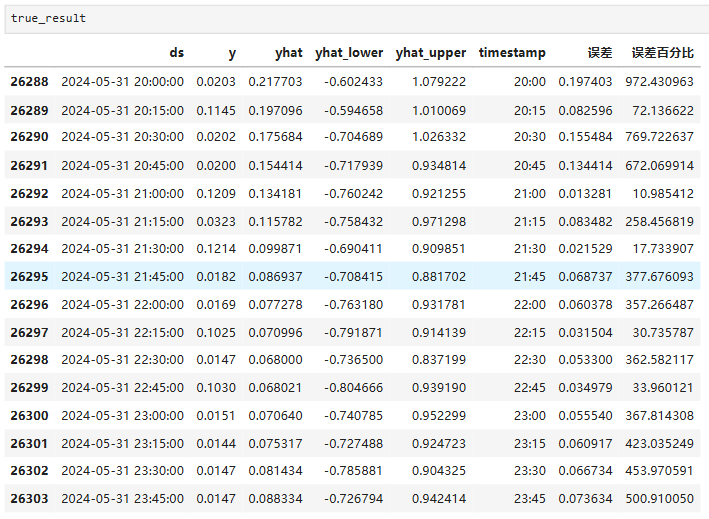
Python实现prophet 理论及参数优化
文章目录 Prophet理论及模型参数介绍Python代码完整实现prophet 添加外部数据进行模型优化 之前初步学习prophet的时候,写过一篇简单实现,后期随着对该模型的深入研究,本次记录涉及到prophet 的公式以及参数调优,从公式可以更直观…...

TRS收益互换:跨境资本流动的金融创新工具与系统化解决方案
一、TRS收益互换的本质与业务逻辑 (一)概念解析 TRS(Total Return Swap)收益互换是一种金融衍生工具,指交易双方约定在未来一定期限内,基于特定资产或指数的表现进行现金流交换的协议。其核心特征包括&am…...

解决本地部署 SmolVLM2 大语言模型运行 flash-attn 报错
出现的问题 安装 flash-attn 会一直卡在 build 那一步或者运行报错 解决办法 是因为你安装的 flash-attn 版本没有对应上,所以报错,到 https://github.com/Dao-AILab/flash-attention/releases 下载对应版本,cu、torch、cp 的版本一定要对…...

c#开发AI模型对话
AI模型 前面已经介绍了一般AI模型本地部署,直接调用现成的模型数据。这里主要讲述讲接口集成到我们自己的程序中使用方式。 微软提供了ML.NET来开发和使用AI模型,但是目前国内可能使用不多,至少实践例子很少看见。开发训练模型就不介绍了&am…...

【Go语言基础【13】】函数、闭包、方法
文章目录 零、概述一、函数基础1、函数基础概念2、参数传递机制3、返回值特性3.1. 多返回值3.2. 命名返回值3.3. 错误处理 二、函数类型与高阶函数1. 函数类型定义2. 高阶函数(函数作为参数、返回值) 三、匿名函数与闭包1. 匿名函数(Lambda函…...
